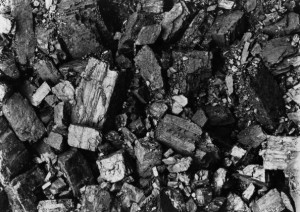Sierra Club Takes Aim at Coal Plants in East Texas
From the Texas Tribune:
FAIRFIELD, Texas — Staring across a lake at the oldest coal-fired power plant in Texas, Mayor Roy Hill thinks back to the early 1970s, when his father helped bring the plant to the area.
“Quite honestly, this plant saved Fairfield,” Hill said. Should it close, he said, the economic impact would be “catastrophic.”
But closing Big Brown, as it is known, and two other 1970s-era coal plants in East Texas has emerged as a top goal of the Sierra Club. The group is escalating a campaign against the plants’ corporate owner, Dallas-based Energy Future Holdings, whose subsidiaries include the state’s largest power-generation company. Coal combustion produces mercury and other pollutants, and environmentalists say that the old plants are especially harmful to the climate and Texans’ health.
“We can’t fix the climate problem in the United States unless we fix what’s happening” at EFH, said Al Armendariz, who is leading the Sierra Club’s anti-coal push in Texas. The company, the club says, operates some of the nation’s dirtiest coal plants.
EFH said that its plants meet environmental requirements and provide round-the-clock power needed by the growing state.
The campaign is “misguided in that it’s not based in reality, and it lacks facts,” said Mac McFarland, the chief executive of Luminant, the power-generation arm of EFH. He said the company meets or exceeds every environmental regulation, both at the federal and state level, and that the coal plants will keep running.
Tensions already exist between Luminant and Armendariz, who was appointed by President Obama in 2009 to head the Dallas-based regional office of the Environmental Protection Agency. Armendariz resigned last spring after a video containing controversial comments about his enforcement philosophy surfaced. During his tenure, he and McFarland met once.
Coal accounts for 70 percent of the energy that Luminant produces. A majority of the power produced at the East Texas coal plants targeted by the Sierra Club — Big Brown in Freestone County, Martin Lake in Rusk County and Monticello in Titus County — comes from lignite, a relatively dirty type of coal mined near the plants. (The club is also targeting a unit of another Luminant coal plant in Milam County.)
The Sierra Club has two coal-related lawsuits pending against the company and has issued two more notices of intent to sue. Last July the EPA sent Luminant a notice saying the company had violated the Clean Air Act at its Big Brown and Martin Lake plants.
Now the group is adding mailings, phone calls and door-to-door advocacy, and plans to take its concerns about EFH to residents and policymakers in Dallas, which is downwind from the plants. It will highlight the plants’ emissions and their contribution to ozone and climate change.
The old Luminant plants account for zero to 2 percent of Dallas’ ozone, according to the Texas Commission on Environmental Quality. Armendariz, says closing the plants would help Dallas work toward compliance with federal ozone standards.
The club aims to persuade Dallas residents to switch from TXU Energy, a sister company of Luminant that sells power to homes and businesses. Last week the Sierra Club launched a website, beyondtxu.org, and a Facebook campaign. The goal is to hurt the revenues of EFH, which carries huge debts and lost $407 million in the third quarter of last year. In December, the ratings agency Standard & Poor’s predicted that EFH “will face a sharp liquidity decline in 2014.”
Michael Patterson, director of communications for TXU Energy, said that his company offers numerous energy-efficiency and renewable energy initiatives in its power-service plans. “It’s almost ironic that they’re targeting us as a retailer, because we’re doing more than anyone” to encourage customers to save energy, he said.
Sierra Club officials will not disclose how much they plan to spend on the Texas effort. But it will draw from a $50 million donation made by Mayor Michael Bloomberg of New York City in 2011 to the Sierra Club’s national Beyond Coal campaign, according to Bruce Nilles, the campaign’s San Francisco-based senior director.
“Without a doubt, this is one of the top two or three most important campaigns we have,” Nilles said.
Other environmental groups, including Public Citizen and the SEED Coalition are helping the Sierra Club.
The tension between environmentalists and EFH reaches back years. In 2007, private equity investors executed the nation’s largest leveraged buyout, a $45 billion acquisition of TXU, a giant Texas utility, and breaking it into Luminant, TXU Energy, and Oncor, which is a power-line utility.
Initially, EFH had sought to build 11 new coal plants in Texas. Amid environmentalists’ opposition, most got canceled. Texas now has 19 coal plants.
A study by the Environmental Integrity project, a green group, found that in 2011, four of the top five mercury-emitting power plants nationally belonged to Luminant. Mercury is a toxin that can harm brains.
The pollution concerns some local residents. “I’m worried about my grandkids,” said Helen Pickett, who lives within 20 miles of Big Brown. She said she hoped the plant would close but would be sorry about local job losses.
Luminant said it spent $270 million for environmental controls across its fleet last year to comply with recently established federal mercury standards and other EPA regulations, and plans to spend another $500 million from 2013 to 2017.
“Look, if the EPA, the TCEQ, who set the rules, set the speed limit at 70, we’re going 55, and they want us to go zero,” McFarland said of environmentalists. “The standard isn’t zero.”
Environmentalists worry that Luminant lacks the money for environmental upgrades, a notion that McFarland rejects. Big Brown lacks a sulfur-dioxide scrubber, a common but expensive cleaning technology. Luminant says that it blends lignite with low-sulfur coal at Big Brown, and that it has cut sulfur dioxide emissions across its power plant fleet by 20 percent since 2005.
Without Luminant’s old coal plants, Texas’ power grid would reel. The coal units the Sierra Club is targeting account for nearly 8 percent of the state’s power capacity, and even Armendariz says he recognizes that “we can’t shut these plants down tomorrow.” But the club would like the plants to be gone by 2018, replaced with renewable energy sources like wind and solar power — which McFarland says is unrealistic.
Coal power is already flailing in Texas and nationwide, as cheap natural gas undercuts the coal plants’ competitiveness. The proportion of coal energy on the Texas grid fell to 34 percent last year from 39 percent in 2011. Two of three units at Luminant’s Monticello plant are shuttered until June because of low power prices.
Future federal rules could affect such plants. The EPA this year may designate new restrictions on sulfur-dioxide emissions. More greenhouse gas regulations may be coming, and a rule aimed at reducing sulfur dioxide and nitrogen oxide emissions across state lines may be reissued. (Luminant had fought an earlier version of the cross-state rule, which a federal court threw out last year.)
“I think there are people in the environmental community who are going to retire,” Armendariz said, “when we finally win this fight.”

